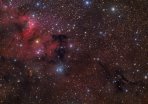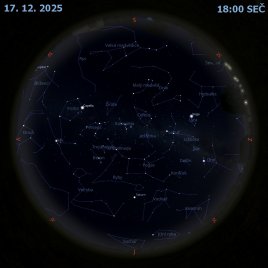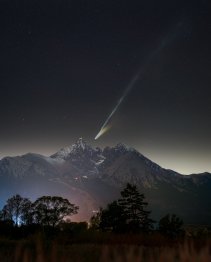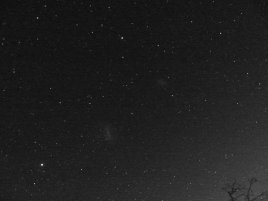Navečer 22. 6. začala geomagnetická bouře. Viditelnost polární záře v následujících hodinách je poměrně vysoká. Na Slunci zároveň došlo k další silné erupci, takže se situace může do dvou dnů opakovat. Vše ovšem záleží na tom, zda i dnešní erupce vyvrhne částice k Zemi, jako ta nedělní.
Na stránce Pluto.jhuapl.edu naleznete vždy poslední a zatím nezpracované snímky Pluta a jeho měsíce Charona, které sonda New Horizons nyní pořizuje každý den. Ze snímků je patrné, jak se kotoučky obou těles zvětšují a podrobností přibývá. Další informace a odkazy k blížící se historické události najdete rovněž na naší speciální stránce.
Po výrazných erupcích na Slunci v blízkosti aktivní oblasti AR2371 (která je viditelná přes filtr pouhýma očima!) se zejména na dnešní noc předpovídají geomagnetické bouře stupně G3. To už je dost na to, abychom záře mohli pozorovat nízko nad severním obzorem zejména v horách. Snad popřeje alespoň trošku počasí...
Ještě pořád nemáte jasno, na jaký letní tábor můžete letos své ratolesti vyslat? Máme pro vás tip: Tajuplný a dobrodružný pobyt v Orlických horách s podtitulem 2015: Vesmírná odysea - Duna. Dětský tábor ještě stále nabízí volná místa a děti se na něj mohou těšit v termínu 8. - 21. srpna. Čtěte více.
Malý přistávací modul Philae na povrchu komety 67P, kam se v listopadu minulého roku zanořil do zastíněné krajiny a usnul, se konečně ozval! První zprávy přinesly BBC News na základě echa z ESA a hovoří, že Philae má konečně při cestě komety ke Slunci dost osvitu k načerpání energie a práci. Přes půl roku v hybernaci je to úžasný úspěch a všichni nyní čekají na další zajímavé výsledky a fotky z povrchu první člověkem dobyté komety v historii lidstva. Další informace na blogu ESA.

V piatok 12. júna 2015 vznikne slávnostným aktom podpisu memoranda zainteresovanými stranami už tretie územie v ktorom bude cielene chránené nočné životné prostredie a tma na Slovensku. Jeho názov je Park tmavej oblohy Veľká Fatra a nachádza sa severozápadne od Banskej Bystrice v centrálnej časti Slovenska. Viac informácií na www.szaa.org a www.fatranskatma.sk.
31. května proletěla americká sonda Cassini naposledy kolem Saturnova měsíce Hyperion. Snímky z průletu ve vzdálenosti 34 000 kilometrů už dorazily na Zemi. Jedním z nich je například dnešní snímek dne NASA. Ale je jich mnohem více. Další informace.
3. června 2015 od 19 hodin ve Velkém klubu plzeňské radnice proběhne přednáška pracovníka Oddělení meziplanetární hmoty Astronomického ústavu AV ČR Dr. Petra Scheiricha o trpasličích planetách Ceres a Pluto. Obě jsou nyní v hledáčku zájmu astronomů. Pořádá Hvězdárna a planetárium Plzeň. Na snímku americké NASA je Ceres se záhadnými bílými skvrnami na povrchu.
Brzy se dočkáme dvou plnoformátových zrcadlovek pro astrofotografii - Nikon připravuje D810a, Canon plánuje výrobu na přístí rok, nyní nabízí model 60Da s APC-C senzorem.
Ve čtvrtek 28. května v 18:00 hodin proběhne na naší hvězdárně v Kolářových sadech přednáška RNDr. Jana Hollana Ph.D., která se bude týkat světelného znečištění. Je to věc, která se týká každého z nás více, než by se na první pohled zdálo. Více.



